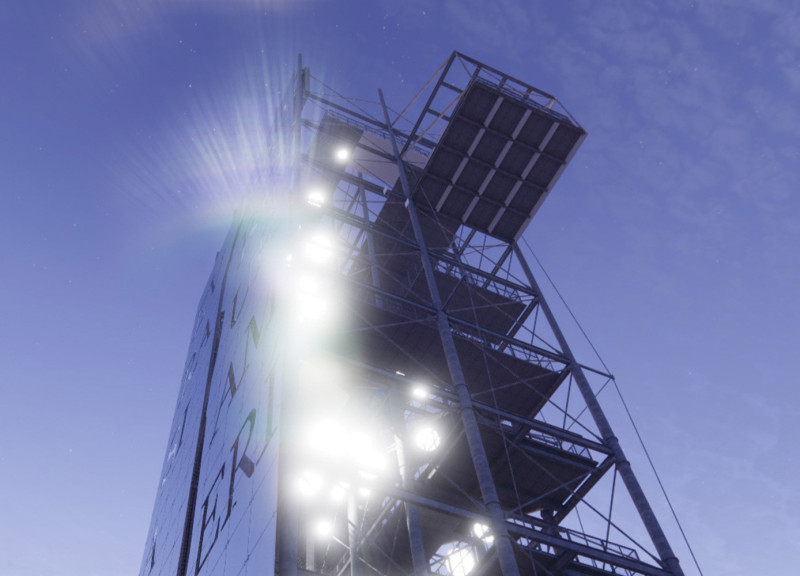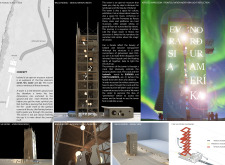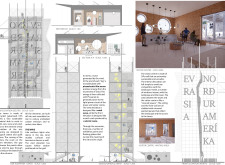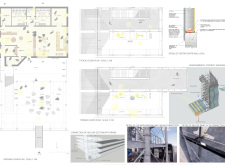5 key facts about this project
The design features a tower located in Iceland, conceived as an open-air museum that embodies the four elemental forces: earth, fire, water, and air. It serves a dual purpose as an observation point and a cultural center, allowing visitors to connect with the unique landscape of Iceland. The architecture emphasizes a journey from solid ground to the sky, creating an experience where visitors can appreciate both the natural and cultural narratives of the site.
Entrance Experience
The entrance is marked by a significant crack that symbolizes tectonic activity, inviting visitors to engage with the geological aspects of the location. This design feature enhances the sense of entry, providing a transformative experience. Visible behind the façade are illuminated names, EURASIA and NORTH-AMERICA, which inform visitors about the continental divide and stimulate interest in the geological history surrounding them.
Façade and Reflection
The tower's front façade consists of mirrors that create a visual connection with the surrounding landscape. This reflective quality allows the structure to blend in with its environment, reducing its visual presence. As visitors move around the tower, each change in perspective reveals different aspects of the scenery, encouraging engagement with the natural beauty of the area.
Dynamic Engagement
The tower's design includes spaces that support various cultural activities, such as exhibitions and performances. The layout allows for platforms and areas where musicians can perform, fostering a sense of community and participation. This multi-use characteristic emphasizes the importance of interaction and exploration, making each visit a dynamic experience.
Sustainability and Materiality
Recycled galvanized steel is the central material used in the structure, chosen for its strength and ability to withstand Iceland's harsh weather conditions. This choice reflects a commitment to sustainability while minimizing environmental impact. The design incorporates bracing systems that support the structure against high winds without compromising its appearance.
The west elevation features square hollow sections that mimic the movement of wind. Each section contains piezoelectric film sensors that capture energy from wind movement. This detailed approach not only highlights innovative thinking about sustainability but also emphasizes the connection between the building and its environment. Visitors experience a harmonious blend of nature and architecture, providing a deeper understanding of Iceland's unique geology.






















































